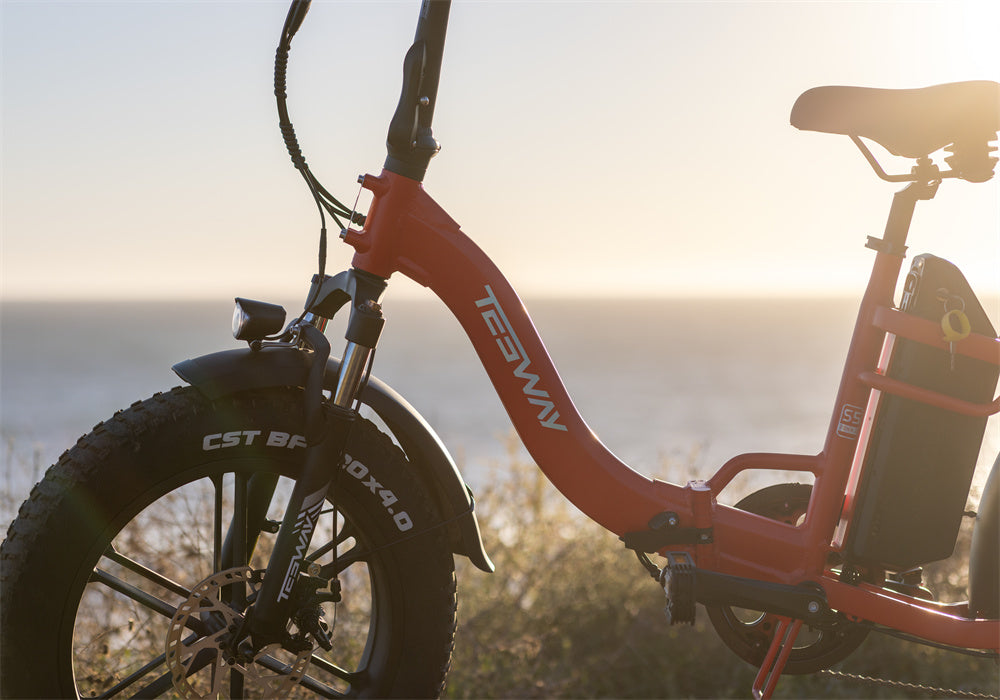In recent years the ebike has ranked high in popularity due to its convenience, battery technology advances, and amazing environmental benefits. Is this the first time you've heard the term electric bike? Not to worry, we got you covered.
Ebikes are motorized bicycles that are smartly integrated with electric motors to assist propulsion. Electric bicycle can be categorized based on class ranging from 1-3 based on pedal-assist, where the motor activates while pedaling, and throttle-controlled, where the motor propels the bike without pedaling.
Understanding ebike speeds is crucial as it is closely connected to the increasing use for commuting and transportation, safety, and legal regulations. Speed knowledge informs purchasing decisions and compliance with laws.
Each class of electronic bike has a different speed capacity which we will dive into together as we further discuss how fast electric bikes go.

Types of Electric Bikes
As earlier expressed, there are three main types of ebikes ranging from class1 to class 3.
Class 1 ebikes are pedal-assist only, without throttle, and have speed limitations. The maximum assisted speed is 20 mph (32 km/h). Class 1 e-bikes are commonly selected for commuting and recreational use where regulations are strict.
Class 2 ebikes are throttle-assisted so no pedaling is required. Class 2 electronic bikes have a maximum speed of 20 mph (32 km/h) and are suitable for persons with limited mobility.
Lastly is the Class 3 ebike with pedal assistance however with higher speed limits of up to 28 mph (45 km/h) and the option also to throttle.
An electric bike can maintain its top speed without pedaling depending on the battery capacity and efficiency. When the battery of the ebike is fully charged, it is possible to function at sustained high speeds for a range of 20-50 miles, depending on various factors like terrain and weight of the rider.

Electric Speed Bike Favorites
Starting with the TESWAY S7 fat tire ebike. The TESWAY S7 cruises with beauty and grace. It sports a 50-80 mi range, 750W motor, a top speed of 28mph (45km/h), 48V 15Ah lithium-ion battery, 330 lbs max load, Up to 60 miles (96 km) per charge, front suspension fork and rear shock absorber, 26” x 4” fat tires, LCD display, pedal assist, and throttle mode. With Tesway S7, you can spend less time charging with greater efficiency. This e-bike is available in 3 colors white, red, and black.
The TESWAY X5 is powered with a 500W motor, 48V 10Ah lithium-ion battery, 25 mph (40 km/h) speed capacity, 50 miles (80 km) per charge range, front suspension fork, 26” x 2.3” all-terrain tires, LCD display, pedal assist, and throttle mode.
The Tesway X7 vs. X5: The X7 has a more powerful motor and higher battery capacity, offering greater speed and range, making it suitable for longer, more demanding rides. The X5 is more fitting for everyday use with a slightly less powerful motor.

Factors Influencing E-bike Speed Without Pedaling
Many factors influence e-bike speed without pedaling. Some of these include the motor power, battery capacity, weight and aerodynamics, and surface conditions. Motor wattage ranging from 250W-500W-750W-1000W+ is essential for speed. The higher the wattage the greater the speed capacity. Increased wattage also attracts more stringent regulations.
The battery capacity monitors voltage and amp-hours which determine the output and duration. The common battery configurations that influence speed without pedaling are 36V, 10Ah, and 48V 14Ah. High capacity batteries support higher speeds and longer distances. Total weight of the bike and rider influences acceleration and top speed.
The aerodynamic design reduces possible drag thus enhancing speed efficiency. Flat terrains facilitate higher speeds while hills and rough surfaces require greater power, reducing possible speeds.

Safety Considerations at Higher Speeds
As you go higher in speed when riding your e-bike, so should your risk assessment. Higher speeds increase accident severity. It's important to ensure you always have your helmets, lights, and reflective gear for optimum safety.
When maneuvering your high-speed e-bike, you will also need an advanced braking system. The best types of brakes include mechanical disc brakes and hydraulic disc brakes as they provide reliable stopping power.
Speed directly affects e-bike energy consumption. Higher speeds will drain batteries faster. It's important to note that typical ranges decrease significantly at top speeds.

Locations and Regulatory Speed Limits
The Federal classifications for Class 1, 2, and 3 in the United States are in keeping with respective speed limits. Class 2 is generally maxed at 20 mph. The state-specific regulations may vary as some states have unique rules.
The European Union (EU) wide regulation limits e-bikes to 25 km/h (15.5 mph) for pedal-assist. Different member countries may have additional rules, for example, Germany’s S-Pedelecs.
Other regions like Canada with provincial regulations generally align with U.S. classifications. Australia’s two classes are maxed at 200W throttle-assist and 250W max pedal-assist. In Asia and China, there are varied regulations with the max at 24 mph in most locations.
Final Thoughts
Understanding how fast electric bikes can go without pedaling involves a combination of factors, including motor power, battery capacity, weight, terrain, and legal restrictions. Class 2 e-bikes are typically made to reach speeds of up to 20 mph without pedaling, in keeping with regulatory standards for safety.
In the near future as technology advances, we may see even more powerful e-bikes that push the boundaries of speed while maintaining safety and compliance with legal standards. For now, persons interested in e-bikes should consider their specific needs, regional laws, and safety standards when selecting an electronic bike.
FAQs
What is the maximum speed of an ebike without pedaling?
The maximum speed of an ebike without pedaling in the United States is classes under the Class 2 ebike. They are allowed to reach up to 20 mph (32 km/h) using the throttle alone. In Europe, the maximum throttle-assisted speed is usually limited to 15.5 mph (25 km/h).
Can all e-bikes be ridden without pedaling?
No, not all e-bikes have a throttle feature. Class 1 and Class 3 e-bikes typically require pedaling to activate the motor assistance. Only Class 2 e-bikes come with a throttle that accommodates the bike to be ridden without pedaling.
Are there ebikes that go faster than the standard limits without pedaling?
While some ebikes can be modified to exceed standard speed limits, this is generally not recommended as it can be illegal and unsafe. Such modifications can also void warranties and impact insurance coverage.







Share:
Stay active and Healthy | Could You Ride A Bike While Pregnant
Bicycles have weight limits but heavyweight riders can still find the perfect bike